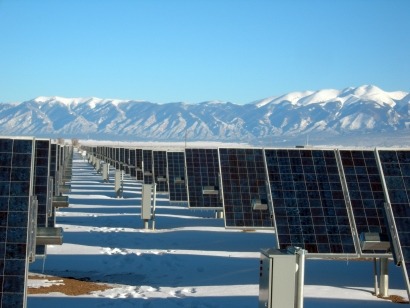
Canada’s consumption of renewable energy will remain lower than most of the world according to figures released by the United States Department of Energy (DOE).
The country consumed 4 quadrillion Btu (quad) of renewable energy in 2010 but this will grow to 6.4 quad in 2040 according to the US Energy Information Administration in its International Energy Outlook 2013. However, this figure depends largely on the price of oil over that same period. If the price is too high, annual growth will reach 1.7 percent, reaching 6.5 quad, but if it is too low then growth will only reach 1.5 percent, or 6.3 quad.
In comparison, the US consumed 7 quad in 2010 which will grow to 12 quad in 2040 or 12.6 with high oil prices. If the price is too low it will each 11.5 quad. The rest of the world consumed 56 quad in 2010 which will grow to 125 quad in 2040 with a high oil price or 115 quad with a low price.
When the figures for renewable electricity generation are examined, the growth rate becomes even lower – 1 percent per year to 2040, which is well below the US rate of 2.8 percent per year and the global growth of 3.2 percent.
Under the EIA’s reference scenario, the share of all renewables (towards total energy use) rises from 11% in 2010 to 15% in 2040, largely in response to government policies supporting renewables in the face of concerns about energy security and greenhouse gas emissions. Almost 80 percent of this increase will come from hydropower and wind. Of the 5.4 trillion kilowatt hours (kWh) of new renewable generation added over the period, 2.8 t-kWh (52 percent) is from hydro and 1.5 t-kWh (28 percent) from wind. High construction costs and wind variability could hinder the economic competitiveness of these technologies but improved battery storage technology and the dispersal of wind and solar facilities over wide areas could help to mitigate some of the problems emerging from wind variability.
Total world energy consumption is expected to grow by 56 percent over the next three decades with a projected rise in energy-related carbon dioxide emissions of 46 percent reaching 45 billion tonnes of CO2.
Further information:
US Energy Information Administration (EIA)
Canadian Association for Renewable Energies (CARE)

